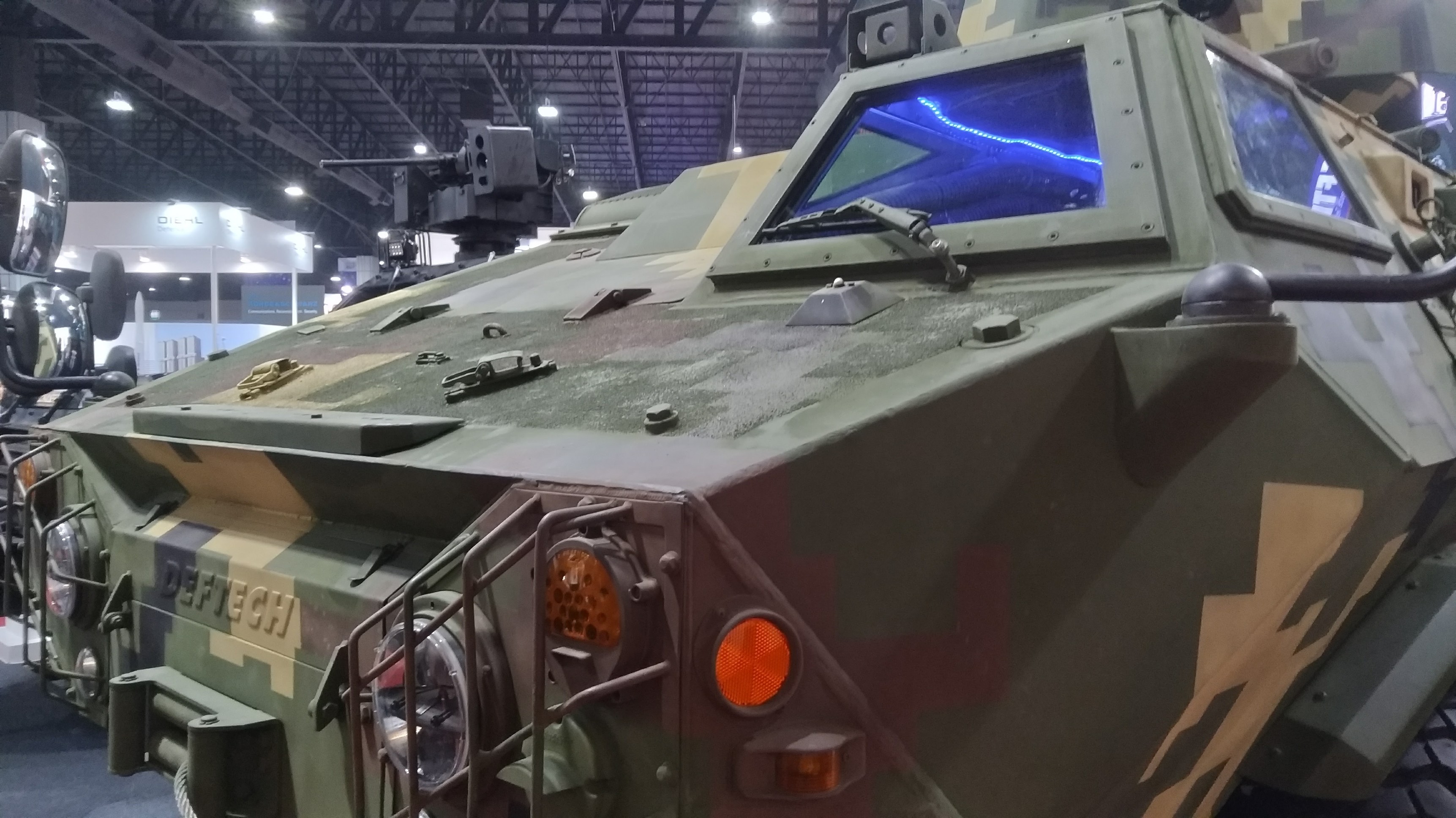
SHAH ALAM: Walk Like A Duck. It was reported recently that German manufacturer, Rheinmetall is close to signing a deal to jointly develop and supply the new Agilis 8X8 armored vehicle to Romania. The Agilis will incorporate Romanian technologies from the local-made SAUR prototypes and German Boxer 8X8 armoured vehicles.
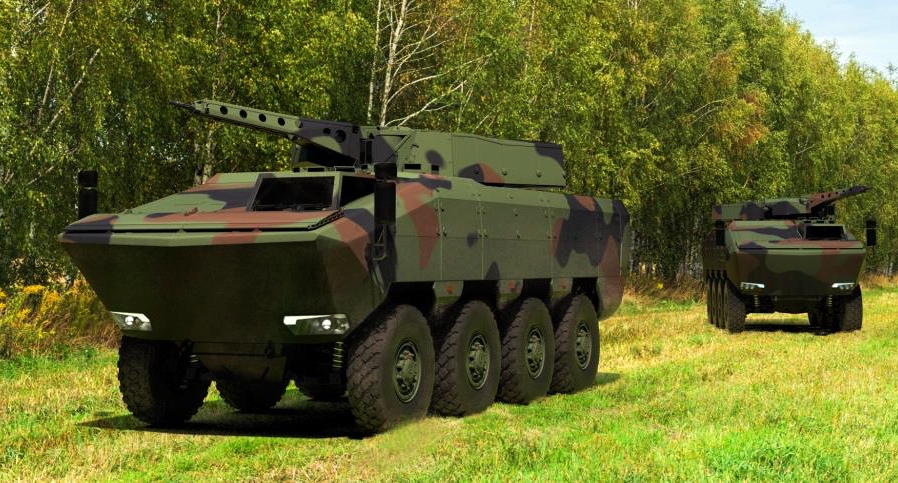
A CGI of the Agilis
So what is got to do with Malaysia then? To me at least the Agilis looked as if its a pimped up version of our own Condor, especially with the cockpit-like driver position. The Condor was originally manufactured by Thyssen-Henschel of Germany, which was later taken over Rheinmetall. Compared the C-pattern Condor displayed in Bangkok earlier this month to the CGI of the Agilis.
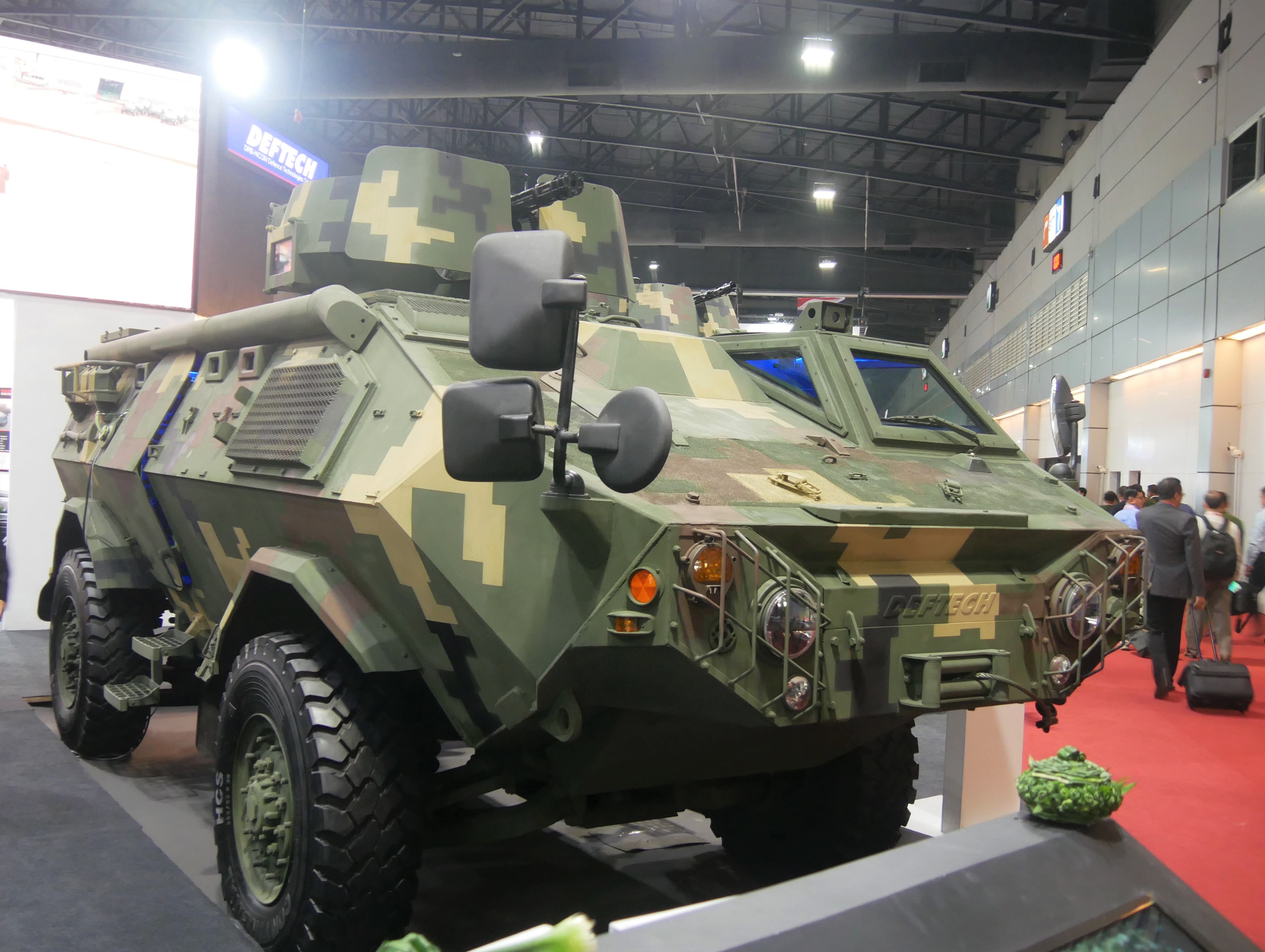
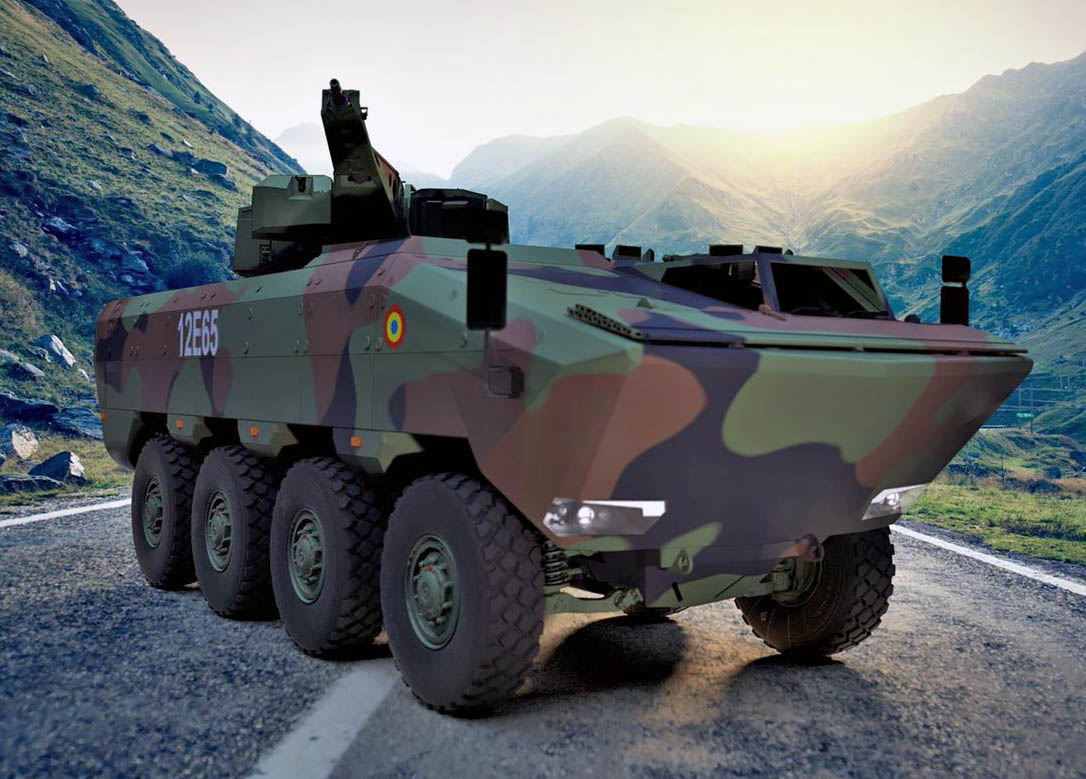
I admit I may have an over imaginative mind though.The Agilis is bigger than the Condor as its an 8X8 and actually more comparable to the Gempita. They however does not look the same.

It would have been nice if we had developed a new 8X8 or 6X6 based on our long experience with the Condor, Sibmas, Commando and the Ferret armoured cars instead of relying on others. Nice but I also realised its prohibitively expensive to develop an indigenous armoured vehicle as even licensing one – as per the Gempita – is a big money sandpit.
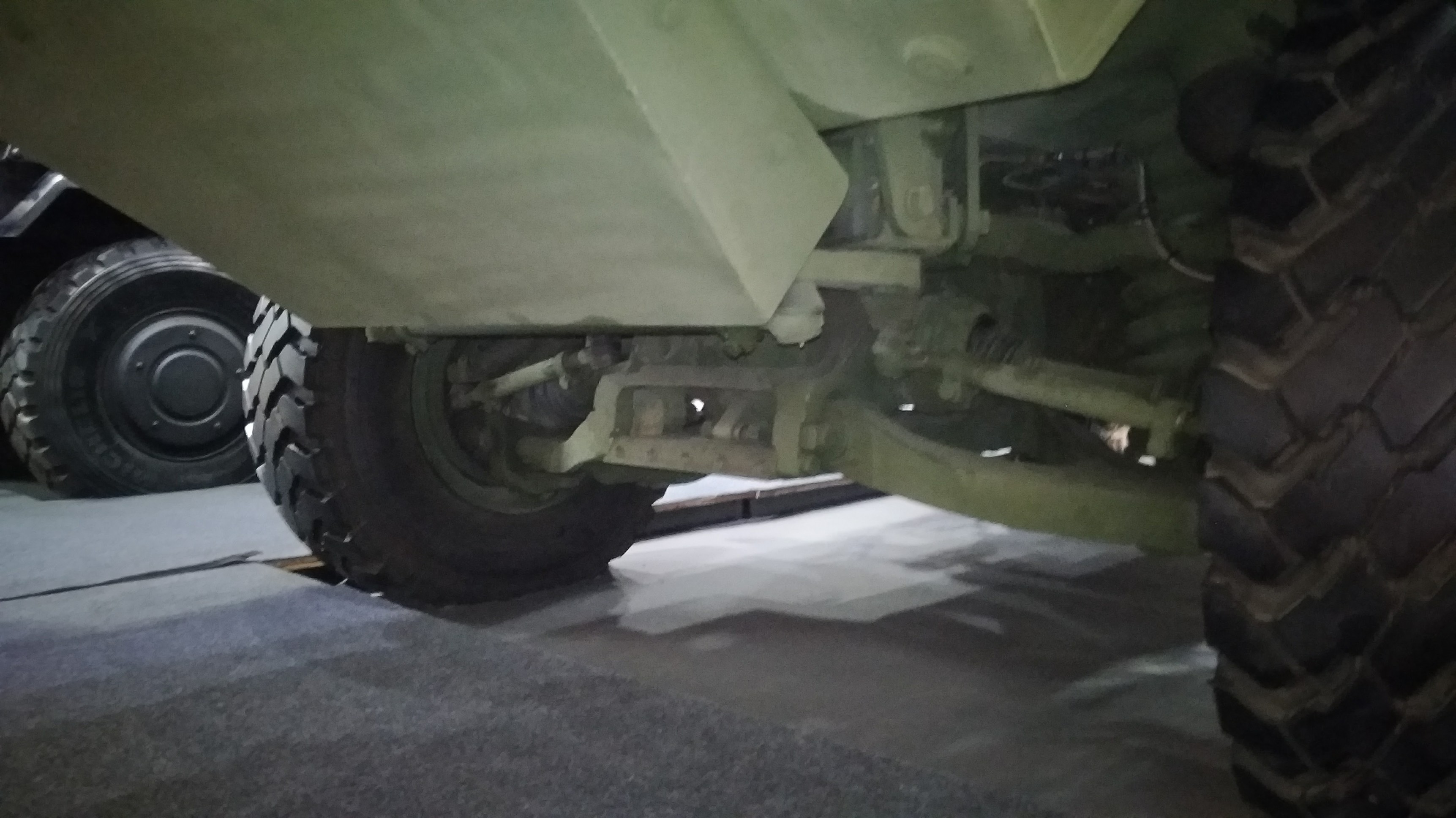
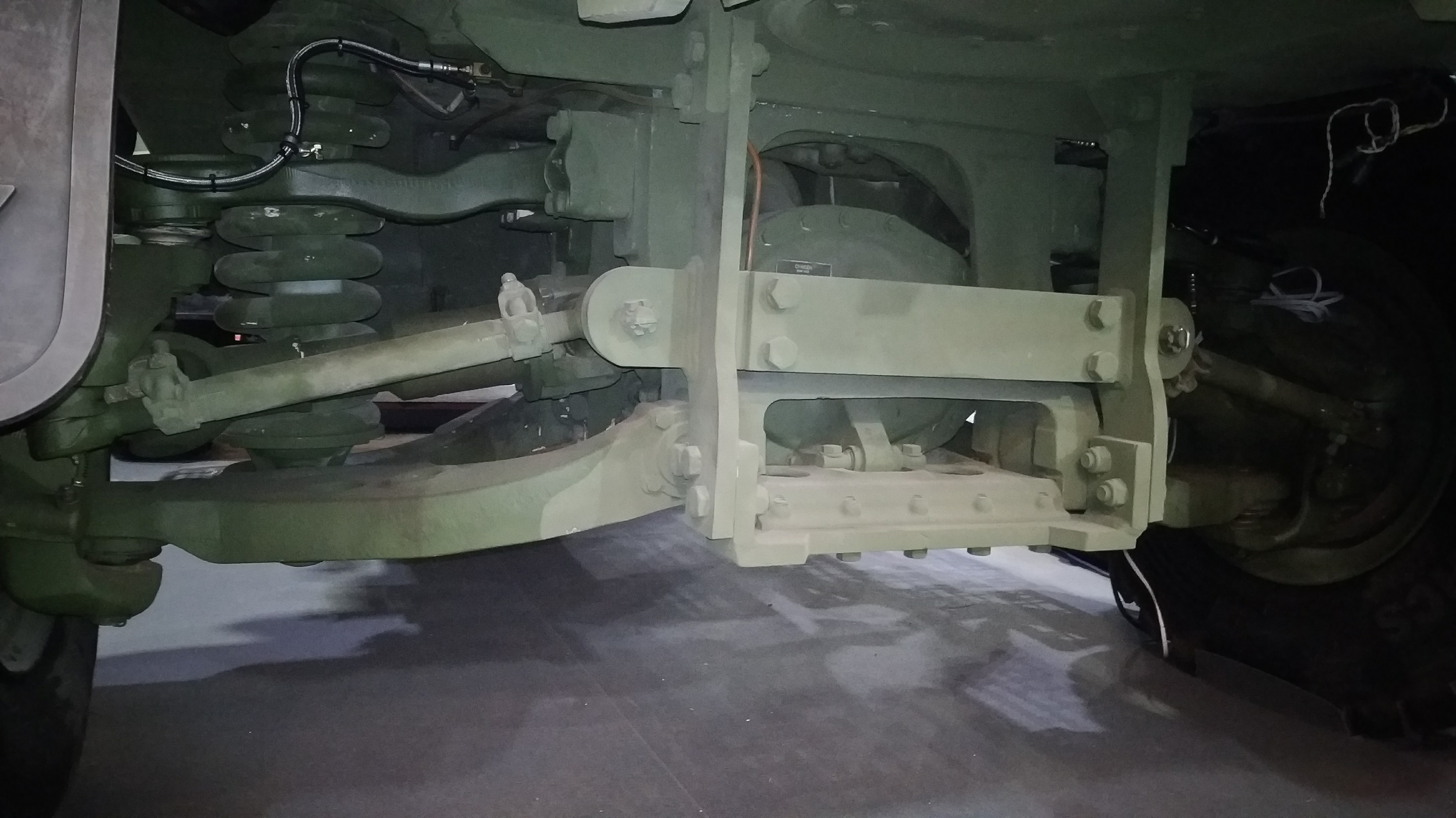
Only countries like the UAE, Singapore and Saudi Arabia can afford to go down that route actually. This is demonstrated by their defence budget! Ours is not big enough to sustain a local defence industry especially those involved manufacturing.
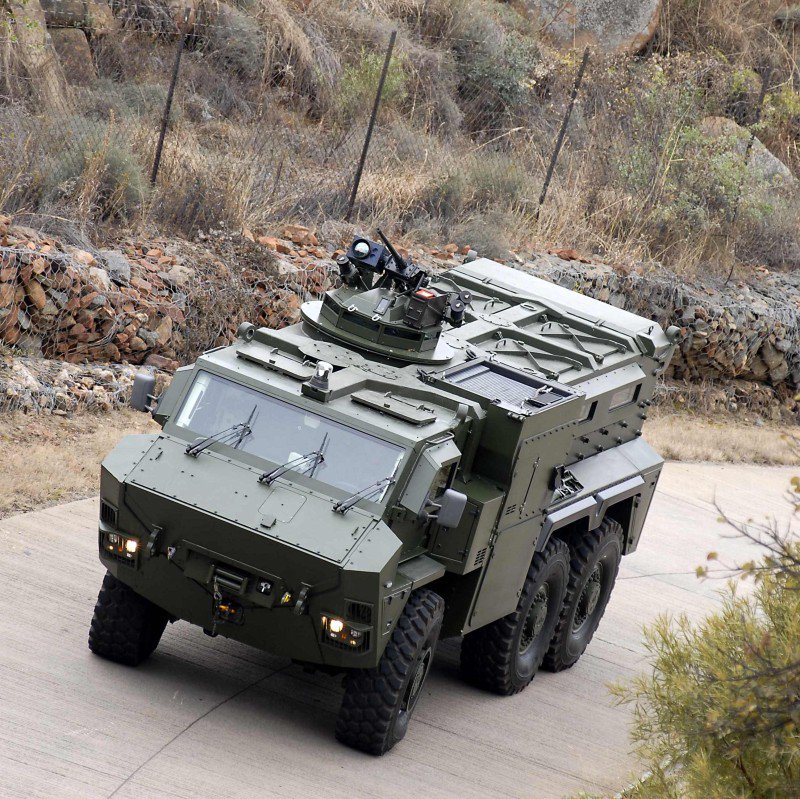
Anyhow, I believed the Jais MRAP (pictured above) is a likely candidate for the 6X6 vehicle being looked at the Army as a replacement for the Condor if there’s fund to do it of course. Deftech signed an MOU with NIMR at the Bangkok show to serve as the Malaysian representative for its range of products. So actually, there is no telling what will be bought, if any.
— Malaysian Defence
If you like this post, buy me an espresso. Paypal Payment

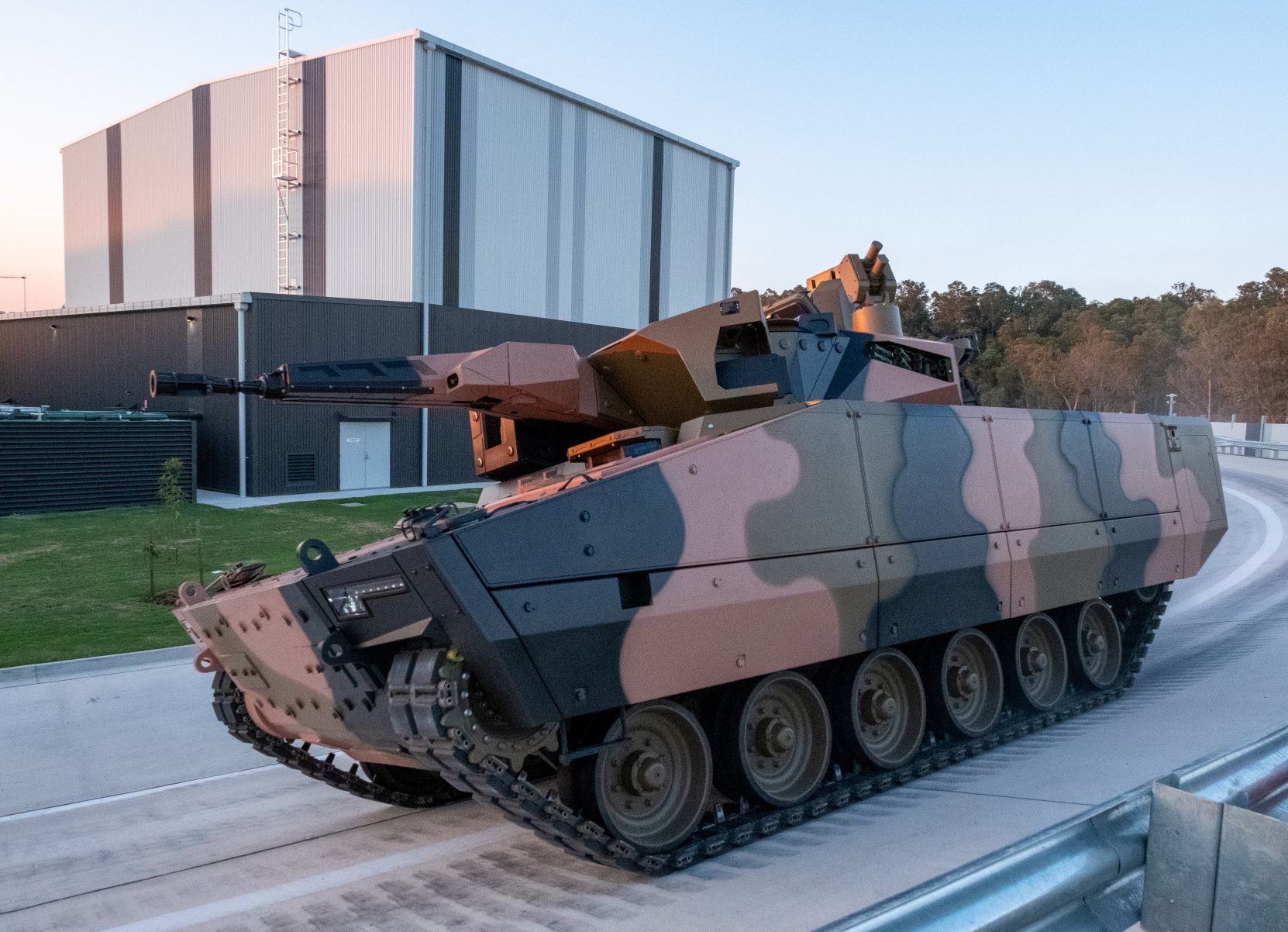
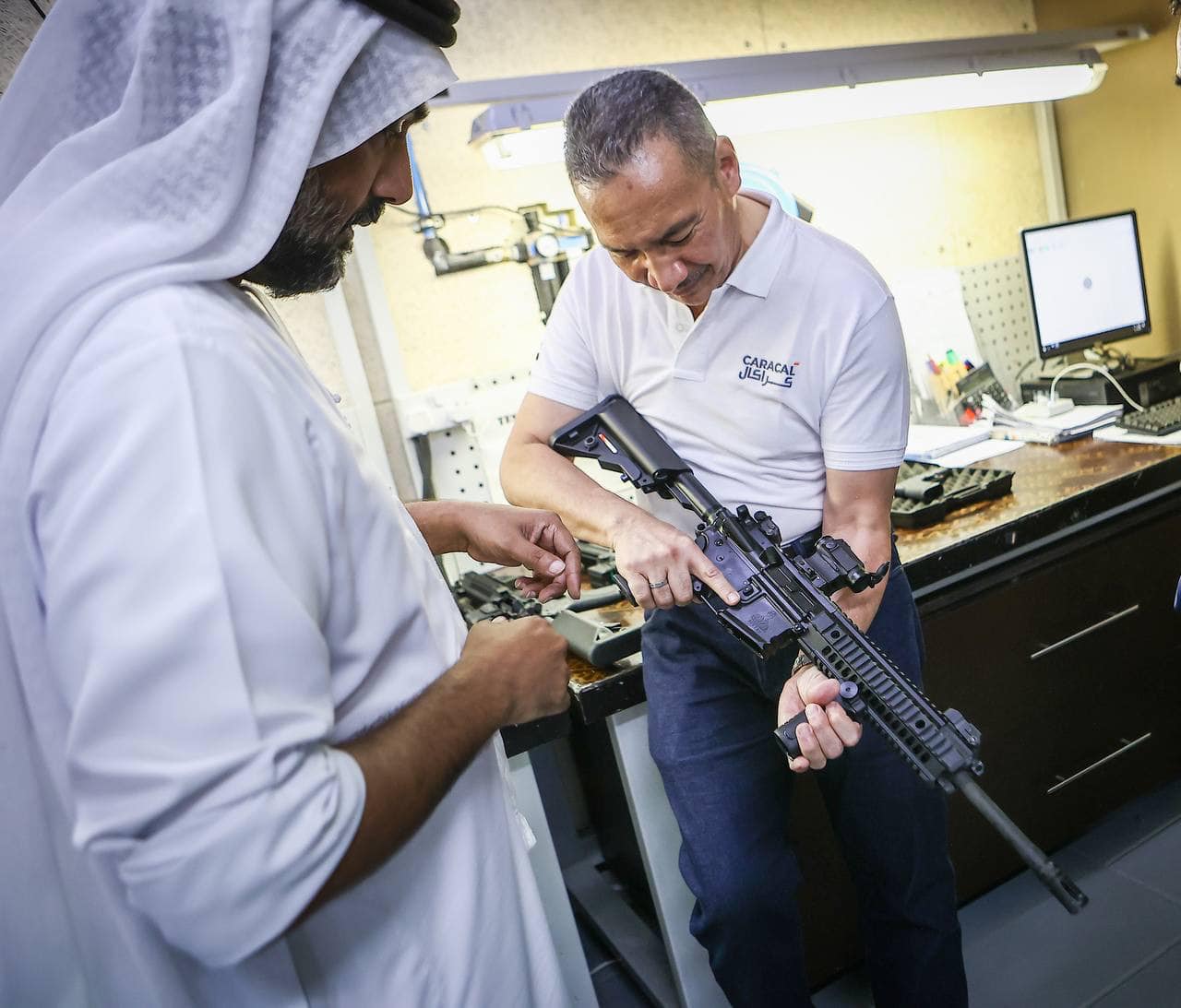
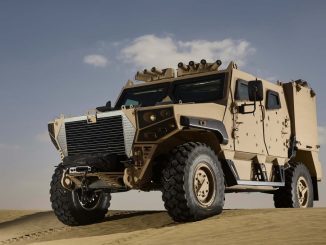
Can we produce a bigger version of condor (or even ratel/sibmas) ? I guess. They both are basically derived from lorries. I reckon deftech can make something like Anoa. But then again there’s no use in having something that isnt that much better than the likes of Condor/Sibmas, especially when we have plenty of them around
If the budget is tight then refurbishing the condors is a smart move esp if the parts are easily available. The funds should go to more important projects….
Marhalim,
No it is not “prohibitively expensive to develop an indigenous armoured vehicle”. Cost will be offset by civil funding that were always budget for as a grant for development purpose to companies, academic institutes and related gov agencies. The armed force in general needs to take a backseat by being realistic in their wish list and actually make some contribution to the national strategic capability.
Marhalim, why are you familiarizing the Condor and the Agilis solely on the basis of the cockpit-like driving position? It’s like you’re ignoring the 95% difference between the two and focusing on the 5% similarity.
Why not say they both use wheels, thus both is very similar.
Producing an “indegenous” vehicle can be “prohibitively expensive” if the right conditions are not met. Regardless of where the funding comes from nobody wants to lose money and there must be economics of scale to justify the whole exercise. Also, amidst all this talk about “indigenous”, most of the components/systems that go on the vehicle have to be sourced from abroad.
It’s nice to say “x” equipment is “indigenous” but in the very first place would it have been cheaper to buy an off the shelf product, assembled locally with certain modifications or go through the whole process of actually locally designing a vehicle? One can also ask, does locally assembling or producing a foreign design actually benefits the country? Who really benefits : the local industry or the army and taxpayer? Also, no point in locally producing something if it’s cheaper to buy it off the shelf and if we have no plans for it to be progressively improved, e.g. does DEFTECH have any plans for an upgraded Adnan with superior protection and situational awareness?
Marhalim,
I hazard a guess the Gempita became ‘expensive’ because of it’s self leveling suspension, something which I presume is of little use in combat, unless it’s an MBT ( dug in/firing from an incline).
Reply
Not really
Zainal,
– The AV-8 became expensive because we decided to manufacture it here and had to pay to set up the production line as also the IP costs.
– Even if it was completely built in Turkey the AV-8 would still have the same suspension. It’s no big deal and also offered standard on most current gen wheeled IFVs.
The AV-8 will cease being “expensive” when enough are ordered to achieve economics of scale and the project will be justified if DEFTECH in the future (based on what it learnt from the AV-8 programme) manages to come up with an “indigenous” design with minimal reliance on foreign help.
Azlan,
No offence, but throughout my years I have seen too many armchair engineers like you in the office. There are only a handful nations, my hands are normal with five fingers, that can produce an AV from a to z. Intergration itself is a technology. lking about wasting tax money, we still canont even piece a mediocre AV together in the 21st century.
The main reason all our attempts failed because:
1. The armed force have no clue what they are up to, whether forced or voluntarily running a program;
2. They set requirements that are way beyond what they can pay and also have no clue what they asking for;
3. The programs were grossly mismanaged, no body was punished, only end up abandoning the idea for good;
4. Due to the above erratic, non predictable demand, the market is no sustainable, the next attempt always starts from zero.
6×6 APC is there an urgent need? Thought that with new APC in 4×4 and 8×8, we got it covered.
Assuming there is a need of 6×6 MRAP, the numbers will be small. A battalion worth of MRAP maybe harder to justify than a battalion of APC. Deftech is smart with the MOU. If a 6×6 APC is required, they can offer 6×6 PARS, then if its MRAP they have JAIS.
Looking forward to upgraded Adnan. Maybe Deftech can fix chicken cage, ERA, APS, 360deg camera, digital cockpit etc but why bother if end user is quiet on that front.
M,
Yes i wanted to ignore you but, you raised some interesting points.
I understand your experiences with the military are mostly dealing with the maintenance of the hawks.
IMO those experience is air force centric and a great example of why i think the air force leaders are living in dreamland, your point no 2 sums it up perfectly.
But i beg to differ regarding to the navy and the army. Yes more can be improved, but they are certainly moving on the right path. You can see the results with the LCS ( how a supposed OPV buy was morphed into a capable asw frigate, it takes some good navy leaders to come out with that ), the 15 to 5 plan. The army pushing for network centric force, the brilliant out of the box thinking of employing RPGs as a firepower overmatch against an opponent, the very early realisation of the need of increased armor protection that came out with the gempita. I was an early skeptic, but when you look at how big it is (it is bigger than the adnan, bigger than the current us army strykers) the malaysian army in a hindsight was one of the pioneers of the adoption of highly armoured (STANAG Level 4) 8×8 wheeled IFVs. So lets give them a credit where it is due.
…,
“IMO those experience is air force centric and a great example of why i think the air force leaders are living in dreamland, your point no 2 sums it up perfectly.”
Any chance we’ll have new and competent air force leaders in next year or so? If so, what do you expect them to do with our air force?
Let’s face it, what is wrong with 8×8 Gempita is producing 12 variants locally. 256 units are too small. Who else in this region or world will buy from deftech if they can buy from the turk?
The sad thing is even thailand 4×4 is selected over AV4. Just berprasangka baik, maybe those AV4 not match with the requirement.
I think local defence industry should focus first on small and low tech weapon such as rifle, hand gun and ammo. Next maybe RPG or bazooka. Hopely next rifle standard is not a licence one but local design.
@ xan verda
The current air force leaders this past few months are moving towards
a more logical thinking and planning, although nothing official coming out. Lets see if the LCA and MPA will come out good.
@ Romeo
The local manufacturing of gempita is not ideal, with very questionable value and can be done in better different ways, but the operational reasoning behind the need of something like the gempita by the army in itself is very much based on good strategic thinking and planning. So that is 2 different things we need to differentiate when we discuss.
@Romeo,
“I think local defence industry should focus first on small and low tech weapon such as rifle, hand gun and ammo. Next maybe RPG or bazooka. Hopely next rifle standard is not a licence one but local design.”
I hope the next indigenous assault rifle won’t be the VB Berapi 2.0, because that thing makes me cringe when looking at it. However, we do have the Malinnov pistol and it’s a decent gun so far.
Imho we do not need local arm industry either small arm or major assets.What we need is for defense spending be 100% use for defense purposes not to justify a not thoroughly thought economic venture that will only benefits a small segment of the population.Dont have any statistic to back me up but gut feel i believe around 20% to 30% of the budget went to this with very questionable results
Good look at how Sg defence science technology agensi (DSTA) help Sg design and upgred war machine and maximise bang for buck. Pls read DSTA annual report 2016: https://www.dsta.gov.sg/annual_report_FY2016/#p=5
Xan Vreda: “I think local defence industry should focus first on small and low tech weapon such as rifle, hand gun and ammo. ”
SME makes our M4s and ammunition from small arms calibers to mortar rounds. There are also local companies like Jentayu that make helmets and body armour hard plates.
Tomahawk:
I doubt if a government owned defence industry would work in Malaysia. Orders are too infrequent, unpredictable and it would be just as wasteful. And even if the government owns it, at some point there have to be contractors. Sad as it sounds, it takes a lot of capital which the government is not willing to invest but which the private sector is.
We paid for the IP to build the Gempita but it doesn’t mean Sg didn’t pay Otokar for the IP to build the AV8 that became the Terrex.
… “but when you look at how big it is (it is bigger than the adnan, bigger than the current us army strykers) the malaysian army in a hindsight was one of the pioneers of the adoption of highly armoured (STANAG Level 4) 8×8 wheeled IFVs. ”
Virtually any 8×8 is bigger than an M113 which is really a modest vehicle. Everything about the Gempita’s size, protection levels, armament choices, networking etc is very ordinary AND chosen from sources the army had no control over. Compared to other ministries, you could say the armed forces have the least amount of control over the things they want to buy.
From time to time, we do acquire things that are a big leap over existing gear. But it’s almost never very advanced or “game changing” and we seldom make the most of it.
… “The local manufacturing of gempita is not ideal, with very questionable value and can be done in better different ways, but the operational reasoning behind the need of something like the gempita by the army in itself is very much based on good strategic thinking and planning. ”
“the malaysian army in a hindsight was one of the pioneers of the adoption of highly armoured (STANAG Level 4) 8×8 wheeled IFVs.”
I would like to give credit to the army’s vision. But we all know the armed forces choices always take a back seat to national interests, and we have a reputation for gold plating stuff.
How do we know the army did not want something simpler and cheaper for their 8×8, but was made to accept something bigger instead? Also possible that we wanted something bigger but had to accept something smaller.
It’s not like I know the army’s choice according to its doctrine. I’ll just say they asked for and got an 8×8. Yes it’s a nice vehicle, but you’re overthinking it.
@ AM
Have you seen the Gempita on the road? I have followed one before. In town area. And it is huge. It is nowhere the same size as previous 8×8 IFVs
This is a picture of the Boxer compared to the piranha I. The gempita is as big as the Boxer.
https://2.bp.blogspot.com/-gJWp8kJfgic/WLNqyoF2CcI/AAAAAAABYKg/E8d68cGXj4shGhSllUVKHXPeXp5FUbXEgCLcB/s1600/C5j5wxiVMAE6sic.jpg
…
I went inside one at the PD open house in March this year and have seen it many, many times. Been in a Terrex too, which is very similar in size to a Gempita.
I did not realise the Gempita is almost the same size as the Boxer. But there is really nothing so advanced about the Gempita and the configurations we chose for it.
@ AM
Sorry that was a picture of Patria AMV35, not the Boxer. But it illustrates how big an IFV needed to be to get somewhere to STANAG level 4 protections.
Yes the gempita has nothing so advanced compared to other 8×8 IFV that has STANAG level 4 protection. When the requirement came out in around 2005 there is not many countries see the need for an IFV with that high protection (boxer probably, the AMV XP and terrex 2/3 only available post 2013). But the army leaders see the need of something like that, ordinary people like me baulked at an IFV that is costing as much as a tank. Now in the past 4-5 years the requirement for highly protected IFV is normal, but the army leadership was not a follower of the trend, they are one of the early people to recognise the requirement. You can see another of their unique thinking in adopting RPG-7 in an army mainly following western strategies.
There is also other signs of a well thought requirement. Look at the MKM missile approach and warning sensors. Normal fighters usually has uv (optical) and radar warning for missiles (to warn IR and radar guided missiles). But the MKM has these and also the Laser warning sensors. Why laser? Because we have experiences with Starburst and MiG-29 IRST. Starburst uses laser beam riding, while russian IRST uses laser rangefinder to calculate range. Singapore followed suit with their eagles, putting on similar laser warners on their fighters.
@ AM
Just noticed that there is no Commander Panoramic Sight on any of the Gempita’s Denel LCT30 turret.
It should be like this:
https://www.malaysiandefence.com/wp-content/uploads/2010/04/DSA-2010-031.jpg
@ D.W
Yes, noticed that too… Hopefully it will be installed soon, not deleted as a cost saving measure.
…:
The army did not have a choice in the supplier of the 8×8 and its fittings. But it did request and receive a high proportion of ATGM turrets among the 257 vehicles ordered. It’s a big improvement to our armoured anti tank capabilities.
“But the MKM has these and also the Laser warning sensors.”
I’m not sure but I think in the west, laser warning receivers are mainly put on helicopters and transport aircraft because the threat from lasers is mostly from ground based air defence and these aircraft most exposed to it when they fly low and slow. Actually aside from Starburst and Starstreak, there are no SAMs that are laser beam riding, at least none that I know of.